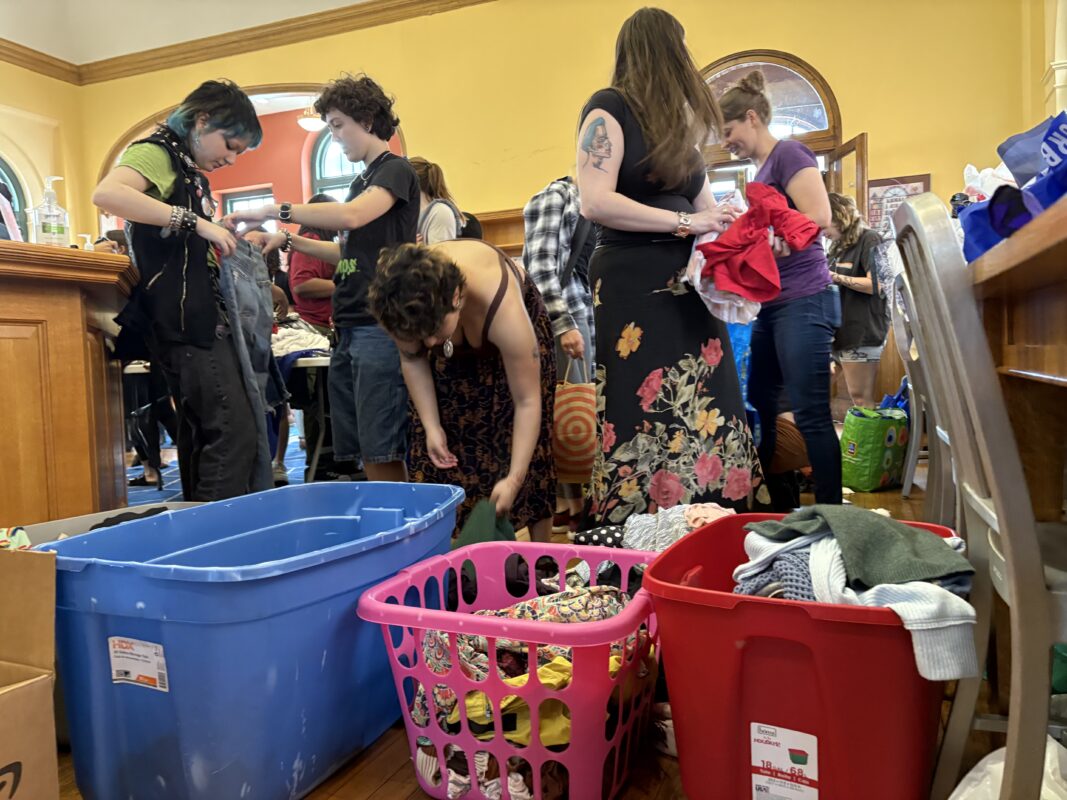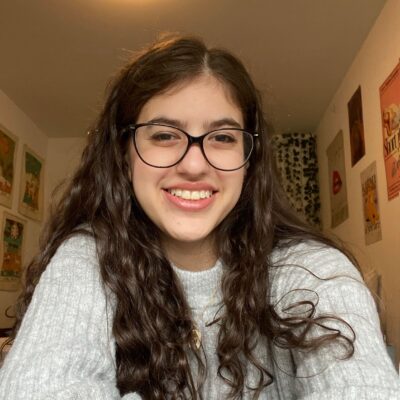
“Welcome to the swap,” says Baltimore native Jasmine Kerbel, greeting guests entering Village Learning Place in Charles Village on a Sunday in late-March.
For the next two and a half hours, Jasmine will repeat that phrase to more than 200 people coming to participate in the Baltimore Clothing Swap—a monthly event she co-created in 2023 with her sister, Aleeza Kerbel, and one of her best friends, Mayan Teles.
When participants come to the swap, they drop their donated clothes on the floor and are encouraged to “shop” the items already set out on tables. Then, the founders—as well as other volunteers—work quickly to sort the items into categories (both gender and size-inclusive) and run the donated clothes to the correct section. And here’s the best part: it’s all free.
“We’ve always been very interested in sustainable clothing options, so we were already pretty avid thrifters,” Teles says of the inspiration behind the event.
For Jasmine and Aleeza, secondhand shopping has been the norm since childhood: “Our parents are immigrants, so we’ve always been into thrifting,” says Aleeza. “I know it has kind of become more popular here [throughout the years], but, for our family it was [always] in style. Our grandmother would come from South Africa and be like, ‘let’s go to the thrift store.”
In the last decade, thrifting has become widely recognized as a cheaper, more sustainable way to shop for a new wardrobe. While donating your old clothes to your local Goodwill certainly isn’t a new concept, with the resurgence of flea markets and resell stores (think: Uptown Cheapskate and Plato’s Closet), thrifting has become more mainstream.
However, while these shops offer of-the-moment, second-hand clothing items, they can still be pricy. “Not everybody can afford to go to the thrift store.” Aleeza notes. “[That’s part of why] we were motivated to do this.”
The women were inspired after attending a clothing swap in Patterson Park a few years back to raise money and clothes for victims of sexual assault. They wanted to attend another, but were unable to find any in the area at the time, so they decided to host their own. Since then, other swaps have popped up (The Clothing Swap Baltimore is another well-known sustainability group) and popularized the concept in Baltimore and beyond.
Teles notes that they’ve seen other clothing swaps enforce strict rules. (If you bring three items, you can take only three items; you must pay an entry fee, but there isn’t any information about what the fee supports.) But they wanted to do it their own way.
“We liked the idea of just a free-for-all swap,” Teles says. “If the true intention is to serve our community in that way, then there shouldn’t be rules and stipulations. It should just be—you don’t have to bring anything and you take as much as you want.”
The idea is that donations are brought by the community, put out by community volunteers, and are given new life by members of the community. “It’s really being able to take stuff and fill your closet,” Jasmine says.
According to a report by the National Institution for Science and Technology (NIST), only 15 percent of clothing items get reused or recycled, with the other 85 percent ending up in landfills or incinerated.
In keeping with their zero-waste, community-focused mentality, the founders take any leftover items from the monthly events to local organizations like churches and Sheppard Pratt—which provides rehabilitation homes for people experiencing homelessness.
“Sometimes they only have the clothes on their back,” says Aleeza, who is a former Sheppard Pratt employee. “Sometimes they don’t even have clothes—they only have what they wore in the hospital.”
The founders are pleased with the growth of the event throughout the past two years, mentioning that attendance has seemingly skyrocketed during their last two swaps.
“It’s kind of crazy how we went from just tapestries on the ground to now being hosted by all these different venues,” Jasmine says.
Moving forward, Aleeza says she hopes they can find a permanent home in the city where people can drop in to shop for clothes any time. She envisions it as a free community closet that is always stocked, similar to a community fridge.
“Being better for the environment is being better for human beings,” Aleeza says, “and being better for human beings is being better for the environment. It’s all connected.”
